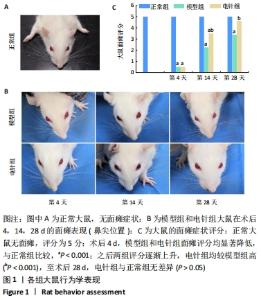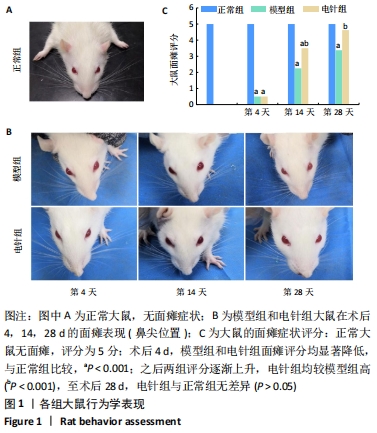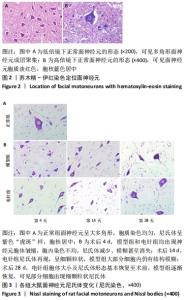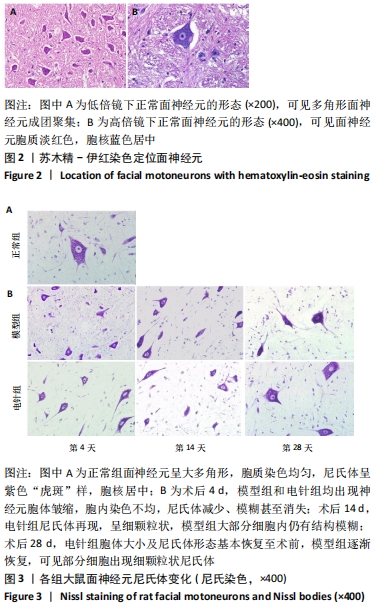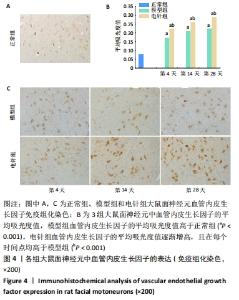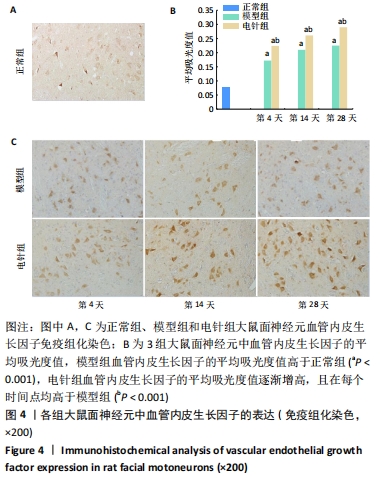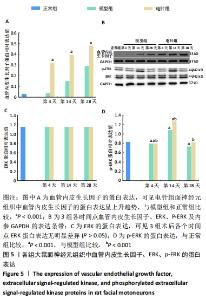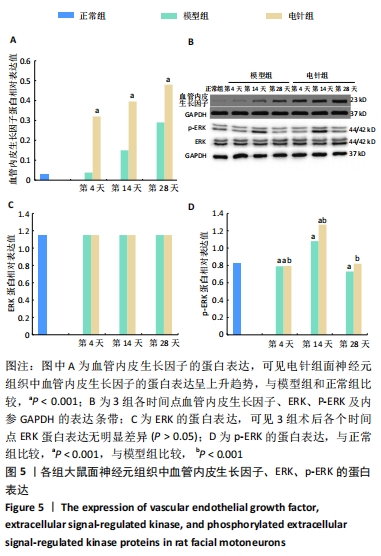[1] 吴芳.复方甘露醇联合糖皮质激素类药物治疗重度面神经炎疗效及对面神经功能的影响[J].当代医学,2020,26(29):98-100.
[2] 姜国华,张玉瑶,王吉锡,等.面神经损伤的针刺效应与面神经核胆碱乙酰转移酶的关系[J].解剖学杂志,2007,30(4):465-467.
[3] SENGER DR, VAN DE WATER L, BROWN LF, et al. Vascular permeability factor (VPF, VEGF) in tumor biology. Cancer Metastasis Rev. 1993;12(3-4):303-324.
[4] ZHANG N, CHEN J, FERRARO GB, et al. Anti-VEGF treatment improves neurological function in tumors of the nervous system. Exp Neurol. 2018;299(Pt B):326-333.
[5] 王朋朋,李志娟,邢适颖,等.VEGF对小鼠急性心肌梗死后心肌细胞缺血损伤的保护作用[J].中国循证心血管医学杂志,2020, 12(9):1071-1074.
[6] 周经霞,陈琳,陈擘璨,等.血管内皮生长因子通过PI3K-Akt和MAPK-ERK通路促进脑梗死大鼠血管新生机制[J].中国老年学杂志,2019,39(15):3749-3752.
[7] 童威,何剑波,张文岐,等.电针对面神经损伤兔面神经核中GDNF、CHAT表达的影响[J].现代中西医结合杂志,2018,27(12): 1278-1282.
[8] 李雷激,徐超然,覃纲,等.面神经损伤后面神经核中神经型钙黏附分子及胎盘型钙黏附分子的表达[J].中国组织工程研究,2015, 19(37):5978-5982.
[9] 费静,郑红弟,余莉亚,等.胶质细胞源性神经营养因子/PI3K/AKT通路参与电针促进面神经压榨损伤模型兔的面神经再生[J].中国组织工程研究,2020,24(7):1094-1100.
[10] 牙祖蒙,王建华,周渝,等.穴位针刺对面神经再生影响的动物模型制作[J].实验动物科学与管理,1999,16(1):15-17.
[11] 谭亚芹,马昕婷,王琦,等.国家标准《腧穴名称与定位》(GB/T 12346-2006)使用情况调查研究[J].中国针灸,2016,36(8):871-874.
[12] 张丽丽.丙戊酸对面神经切断伤后面运动神经元凋亡的影响及机制研究[D].济南:山东大学,2018.
[13] 徐进旺,李爱民,刘希光,等.米诺环素对大鼠面神经缺血损伤模型面运动神经元细胞凋亡及Bcl-2、Bax表达的影响[J].实用医学杂志,2015,31(23):3826-3830.
[14] 朱鴷.面神经离断伤后核团微环境中NG2蛋白表达和NG2阳性细胞反应的研究[D].上海:第二军医大学,2010.
[15] 张珊珊,杜震生,陈峰,等.电针联合康复训练对大鼠受压坐骨神经微血管生成的影响[J].针灸临床杂志,2015,31(8):65-67.
[16] CHA MH, NAM TS, KWAK Y, et al. Changes in cytokine expression after electroacupuncture in neuropathic rats. Evid Based Complement Alternat Med. 2012;2012:792765.
[17] 周浪.电针联合梅花针治疗周围性面瘫的临床观察[J].中国医疗器械信息,2020,26(16):164-165.
[18] 胡慧,冯同忠.针灸推拿结合中药汤剂牵正散加减治疗面瘫临床观察[J].临床医药文献电子杂志,2018,5(42):170-171.
[19] 胡立丹,吴林.针灸穴位注射结合中药熏蒸治疗顽固性面瘫观察[J].中华中医药学刊,2018,36(12):3032-3035.
[20] 王照钦.电针介入治疗周围性面瘫时机的临床与机制研究[D].济南:山东中医药大学,2017.
[21] 王丹丹,谯凤英.拔罐法与针灸疗法结合治疗周围性面瘫的研究进展[J].湖南中医杂志,2018,34(1):188-190.
[22] 牙祖蒙,王建华,李忠禹,等.穴位电针刺激对面神经再生过程中表情肌组织神经生长因子mRNA表达的影响[J].中华物理医学与康复杂志,2000,22(3):157-159.
[23] 姜国华,卫彦,单丽莉,等.穴位电刺激对周围性面神经损伤兔面神经核中BDNF的影响[J].针灸临床杂志,2006,22(1):44-46.
[24] 费静,王长黎,李雷激.电针对面神经损伤后上皮钙黏素和钙调素在面神经元中表达的影响[J].实用医学杂志,2019,35(1):51-55.
[25] 李小娟,赵中亭,朱田田,等.针刺促进面神经损伤修复的机制研究进展[J].针刺研究,2018,43(1):60-62.
[26] 李欢欢,侯书伟.针刺“髓会穴组”治疗面瘫后遗症的临床观察[J].针灸临床杂志,2014,31(8):12-14.
[27] 薛景凤,李健,王笑茹.面神经局部缺血对其超微结构的影响[J].解剖学杂志,2008,31(6):838-840.
[28] 刘春影,周延民.血小板浓缩物促进周围神经再生的研究进展[J].口腔医学研究,2020,36(6):509-511.
[29] Park SA, Jeong MS, Ha KT, et al. Structure and function of vascular endothelial growth factor and its receptor system. BMB Rep. 2018; 51(2):73-78.
[30] 王薇,缪化春,吴锋,等.天麻多糖结合电针抑制脑缺血大鼠Meynert基底核神经元损伤和上调BDNF、SCF及VEGF表达[J].中国组织化学与细胞化学杂志,2017,26(2):122-128.
[31] 钟树志,晁杲,周静,等.复元活血汤对大鼠损伤坐骨神组织VEGF、TGF-β1表达的影响[J].中药药理与临床,2016,32(5):4-8.
[32] CERVELLINI I, GALINO J, ZHU N, et al. Sustained MAPK/ERK Activation in Adult Schwann Cells Impairs Nerve Repair. J Neurosci. 2018;38(3):679-690.
[33] HUANG F, CAO J, LIU Q, et al. MAPK/ERK signal pathway involved expression of COX-2 and VEGF by IL-1β induced in human endometriosis stromal cells in vitro. Int J Clin Exp Pathol. 2013;6(10):2129-2136. |
